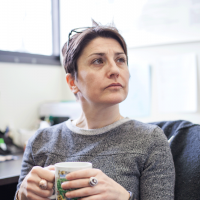Youngmin Park (UF Mathematics)
423 Little HallHigh-Order Accuracy Computation of Coupling Functions for Strongly Coupled Oscillators We develop a general framework for identifying phase reduced equations for finite populations of coupled oscillators that is valid far beyond the weak coupling approximation. This strategy represents a general extension of the theory from and yields coupling functions that are valid to higher-order accuracy …



